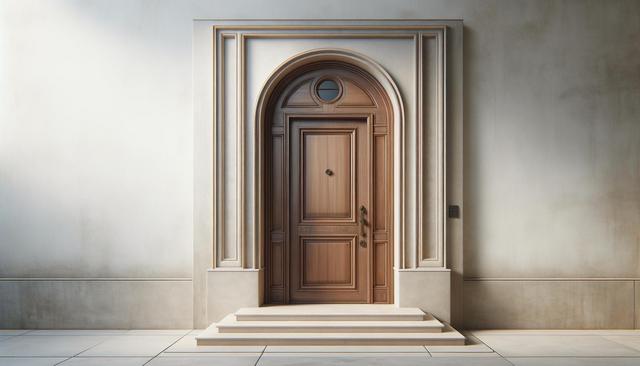Understanding the Importance of Entry Doors
The entry door is more than just a passageway—it’s a central element of your home’s exterior design, a key component of your security system, and a contributor to your energy efficiency. Because it plays such a multifaceted role, selecting an appropriate front door requires careful consideration. Homeowners often look for a door that complements their architectural style while also offering modern performance features. From classic wooden doors to advanced fiberglass and steel options, the range of materials and styles available today allows for a high level of personalization and functionality.
Entry doors are subjected to daily wear and exposure to environmental elements. As a result, quality and durability are crucial. Whether you live in a region with harsh winters or hot summers, choosing a door that withstands the climate helps maintain comfort inside your home and reduces maintenance over time. Additionally, your front door is one of the first things visitors notice, making it a meaningful aspect of curb appeal. Balancing form and function ensures your door serves both practical and aesthetic purposes.
Material Choices and Their Benefits
When exploring front door options, the material is one of the first decisions to make. Each type offers distinct advantages and potential drawbacks depending on your priorities in terms of security, maintenance, and insulation.
Common materials include:
- Wood: Offers a warm, natural appearance and can be customized with stains and finishes. However, it may require more upkeep to resist moisture and warping.
- Steel: Known for its strength and security, steel doors are often more affordable and offer good insulation when equipped with a foam core.
- Fiberglass: This material combines durability with low maintenance and can mimic the look of wood. It resists dents, rust, and weather-related damage.
Choosing the right material ultimately depends on your needs and the climate in your area. For example, fiberglass doors are often favored in areas with extreme weather due to their resilience and insulating properties.
Security Features to Consider
Home security starts at the front door. Modern entry doors come with a variety of features designed to enhance protection against intruders. Reinforced frames, multi-point locking systems, and impact-resistant cores are just a few examples of advancements that contribute to a safer home.
When evaluating security options, consider these components:
- Locks: Multi-point locking systems provide added protection by securing the door at multiple points within the frame.
- Strike Plates: Heavy-duty strike plates enhance the door’s resistance to forced entry.
- Smart Technology: Some doors are compatible with smart locks and video doorbells, allowing for remote monitoring and keyless entry.
Security should never be compromised for style. Fortunately, many modern entry doors integrate protective features seamlessly into their design, offering both peace of mind and visual appeal.
Energy Efficiency and Insulation
Today’s homeowners are increasingly focused on sustainability and energy savings. Entry doors can play a significant role in regulating indoor temperatures and reducing energy consumption. A well-insulated front door helps minimize drafts and heat loss, especially during extreme temperatures.
Key features that improve energy efficiency include:
- Insulated cores: Materials like polyurethane foam or other energy-efficient fillings enhance thermal resistance.
- Weatherstripping: Proper sealing around the door frame prevents air leaks.
- Low-E Glass Inserts: If your door includes glass panels, choosing low-emissivity coatings helps reflect heat and reduce UV passage.
Replacing an outdated or poorly sealed door with a modern energy-efficient model can lead to noticeable savings on your utility bills over time. Additionally, many energy-efficient doors qualify for tax credits or rebates, adding to their value.
Design and Customization Options
Style is a significant factor when choosing a front door, as it sets the tone for the rest of your home. Fortunately, there is a wide range of designs available to suit every architectural style, from traditional to contemporary. Customization options allow homeowners to achieve a unique look that reflects their personal taste while enhancing curb appeal.
Design features you can personalize include:
- Color and Finish: Select from a wide palette of paints and stains to match your exterior decor.
- Glass Inserts: Decorative glass can add elegance and allow natural light without compromising privacy.
- Panel Styles: Choose from various panel configurations, from classic raised panels to sleek, minimalist designs.
- Hardware: Finishes and styles for doorknobs, handles, and knockers can further distinguish your entry.
By combining aesthetic preferences with functional elements, you can create an entryway that is both welcoming and practical. Many manufacturers also offer custom sizing, allowing your door to fit non-standard frames or unique architectural features.
Conclusion: Choosing the Right Entry Door for Your Home
Selecting a new entry door is a meaningful investment that affects your home’s appearance, safety, and energy performance. By understanding the various materials, security features, insulation technologies, and design options available, you can make an informed decision that aligns with both your needs and your budget. Whether you prioritize a classic look, advanced security, or eco-conscious living, today’s entry doors offer a balance of form and function suitable for a wide range of preferences. Taking the time to explore these options ensures that your new front door will serve you well for years to come.




Leave a Reply